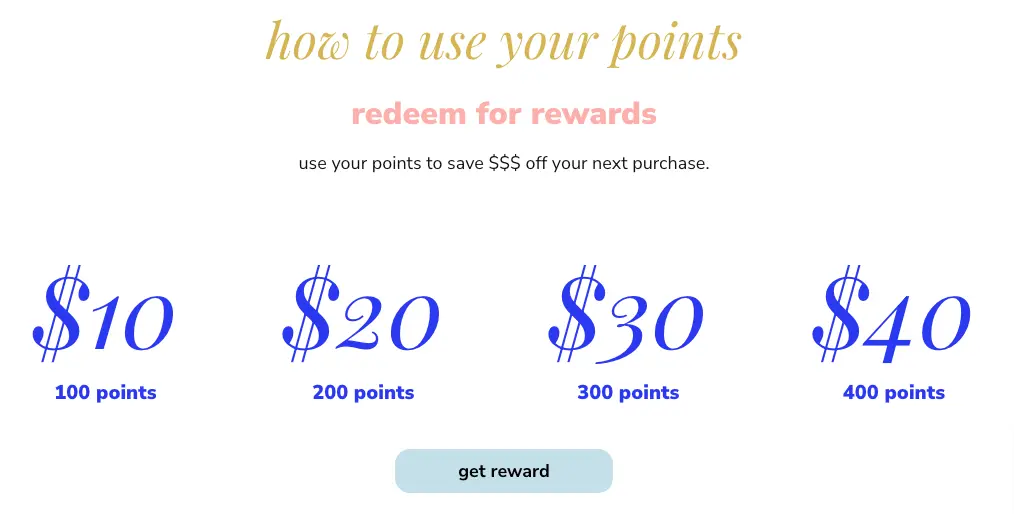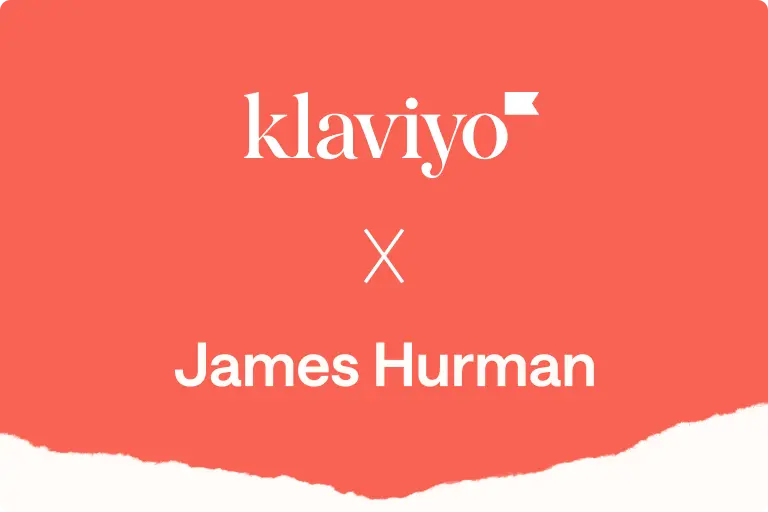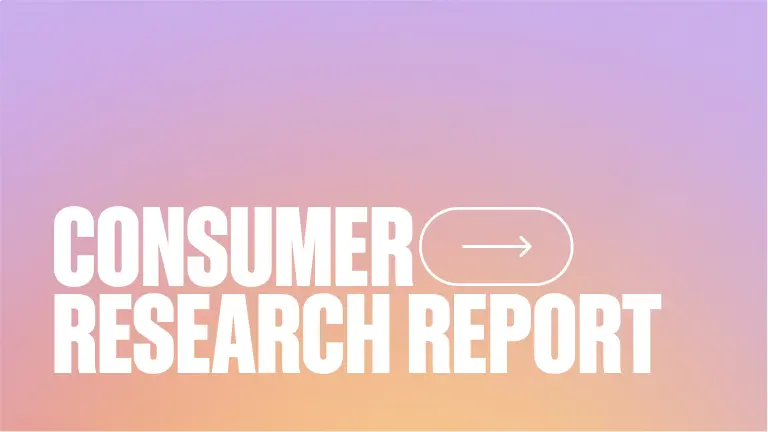10 tips on how to create a VIP program that keeps customers coming back

Inviting your customers to join a VIP program is one of the best ways to make them feel valued.
For ecommerce brands, this means coming up with a win-win strategy—a VIP program that will make your most loyal customers feel special while your customer retention rates and customer lifetime value (CLTV) keep growing.
To help you create a VIP program that fosters a high level of engagement, we’ve put together some of our top ideas for showing your most loyal customers just how much they matter.
1. Let your data guide your VIP program model
Before you roll out your VIP program, it’s a good idea to audit your business economics to make sure you’re making informed decisions. This foundation will set you up to create a successful initiative that resonates with your best customers. Here’s how to get started:
Focus on key metrics like CLTV and repeat purchase rates. If your data shows that you have loyal customers who return every few months or spend a significant amount, that’s your cue that a VIP loyalty program can build on that momentum.
Knowing the average amount your customers spend per order can help you identify your big spenders and what they like. If your AOV is $50, for example, you can start to set goals with the specific aim to push that amount higher.
Audit your products for profit margin. Products that have higher profit margins can serve as excellent incentives for your VIPs, because a discount on that may drive sales on other items without hurting your profitability.
2. Set measurable goals for your VIP program
Your VIP program goals will be a moving target. You may feel like it’s a guessing game at first, but it will be important to make those educated guesses when you’re first starting out—then, you can refine those goals as you become more informed.
Here’s a look at 5 customer retention metrics to focus on, along with potential goals and strategies for achieving them:
Tracking the percentage of customers who make repeat purchases can reveal how well you’re nurturing loyalty. If you’re aiming to boost this rate by 10–20% over the next 6 months, think about offering exclusive discounts or creating a sense of urgency with limited-time offers.
CLTV is all about understanding the total revenue you can expect from a customer over their entire journey with your brand. For example, your target could be to increase it by 15–25% for a certain customer segment within a year. To achieve this, consider introducing tiered rewards that incentivize higher spending.
Think of AOV as the average amount your customers spend each time they shop. For example, if you’re aiming to increase this by 10% with a VIP program in the next 6 months, you could create bundle discounts just for your VIP members. If people can snag a deal on a combo of products, they may be more likely to spend more.
If your aim is to shorten the time between purchases, urgency and gamification are great levers to pull. Lean on time-limited offers, perhaps tied to discount tiers and points, to inspire quick purchasing.
As you’re running your VIP program, always remember to keep an eye on churn rate. While you always want to go out of your way to make your VIPs feel special, it shouldn’t necessarily come at the cost of high churn elsewhere. If you need some help, learn more about how to predict customer churn with data.
3. Choose your VIP program perks wisely
When you have a clear understanding of your business economics and VIP program goals, you’re in a great position to decide on your VIP perks. Remember, a VIP perk is a win-win. Identify perks that will delight customers without hurting your bottom line.
Here are some exciting options to consider:
- Exclusive product samples: Offer limited-time samples of new products just for VIP members.
- Priority access to new launches: Give VIPs early access to new collections or seasonal sales 48 hours before the general public.
- Complimentary shipping on all orders: Offer your VIPs unlimited free shipping regardless of order size or amount.
- Enhanced returns: Allow VIPs to return items at no cost with an extended return window.
- Tiered discounts: Give discounts based on spending tiers, like 10% off for bronze, 15% for silver, and 20% for gold members.
- Personalized birthday gifts: Send a special gift or personalized discount during the member’s birthday month.
You don’t need to implement every perk—focus on those that resonate with your audience and align with your financial goals. This way, you’ll create meaningful rewards without straining your budget.
For example, if your analysis shows that free shipping is a top desire among your customers, it might be a good perk to include in your program. But also know that a 2022 survey by Statista revealed that free shipping, instant discounts, and giveaways are among the most coveted perks among customers.
4. Define your VIP criteria based on outliers
When building your VIP program, you need to figure out what a VIP looks like for your brand. This criteria will look different for every brand, and it’s highly dependent on your audience personas, business model, and profit margins.
For example, a VIP for a luxury brand might hinge on high AOV but not so much repeat purchases, while a VIP for a budget-friendly brand may simply be someone who buys more frequently.
To guide your decision, focus on:
How long does it take for someone to make a decision to buy from your brand? What’s your average time between purchases from repeat buyers?
How’s your cash flow? Do you need to shorten time between purchases while increasing AOV, or are you okay to take a long-term approach and focus on CLTV?
Would your audience buy frequently from you if you didn’t have a VIP loyalty program? How often do outliers buy from you?
Your VIP criteria will emerge at the intersection of this information. The most important thing to remember is that you need to identify outliers who are already loyal to your brand, then reverse-engineer their characteristics to create VIP personas.
5. Use segmentation to personalize your VIP program
Once you know who qualifies as a VIP, the next step is segmentation—sorting your loyal customers into distinct groups or tiers.
Segmentation is what delivers the tailored rewards and messages that make different groups feel special. To create your VIP segments, here’s how different metrics can help you start to categorize loyalty:
Look for customers who consistently spend more than the average shopper when they make a purchase. For instance, if your typical customer spends $50, single out those who regularly spend $75 or more.
If your average repeat buyer has spent $1,000 over their lifetime with your brand and you’re finding people who spend double that amount, this is an indicator of special loyalty. For these people, you may want to choose high profit margin perks that are especially relevant to what they usually buy.
Identify customers who come back to shop regularly, like those who make purchases every month or more frequently. They might appreciate incentives like loyalty points for each purchase or special discounts on their next order to keep them engaged and excited about your brand.
6. Make it easy for customers to enroll in your VIP program
Amidst the excitement of creating your VIP program, don’t forget that it should feel simple for your customers. If your enrollment process feels complicated, you risk losing potential VIPs before they even get started.
Follow these tips to make sure your customers can easily become members of your program:
Keep customers informed about what they need to do to qualify for the VIP program.
Make the enrollment form simple by asking only for what’s necessary, like someone’s name and email. If someone is signing up for your VIP program, you presumably already have a fair amount of data on that customer, —so instead just focus on getting them into the program at first. You can always ask for additional information later.
Use email and SMS to remind customers about enrollment opportunities so they don’t miss their chance to join.
For inspiration, check out how air pump brand Airmoto approaches their VIP program. Here, they use Instagram to spread the news about their VIP program and encourage customers to join in a friendly and straightforward way. The link in the brand’s Instagram bio leads followers to a dedicated VIP program landing page, where all the necessary details of the program are conveniently outlined.

7. Understand your VIP program model options
There are many types of loyalty programs, , but two of the most common are:
Customers earn points with each purchase, which they can redeem for rewards, discounts, or special perks. If you want to increase engagement in addition to customer retention, this option is great because there’s an element of gamification that encourages customers to perform certain actions to accumulate points (more on gamification next).
Customers progress through different levels based on their engagement, such as spending a certain amount annually. The higher the tier, the better the perks, which keeps customers incentivized to reach the next level and enjoy additional benefits.
But you may also be able to combine the two models, like lingerie and athleisure brand LIVELY. LIVELY’s customers can earn points by creating an account, signing up for email and SMS messages, leaving reviews, or placing orders. They can redeem those points to get a discount on their next order.

LIVELY’s VIP customers also enjoy a tier-based program based on annual spending. In the highest tier, customers earn triple points per $1 spent and get special perks like birthday gifts and expedited shipping.
8. Use gamification to enhance a points-based VIP program
For VIP loyalty programs, gamification is the fuel behind the incentive to take action—and it’s a dream partner for any points-based VIP program.
With gamification, you can encourage your customers to earn rewards for taking certain actions, like promoting your brand for you on social media or referring you to a friend. Here are some great ways to incorporate gamification into your VIP program:
Think of actions that customers can take to earn points, like leaving reviews, referring friends, or sharing your content on social media. When customers know they can rack up points by doing things they already love, it makes them more likely to interact with your brand and feel valued in the process.
People love to see progress—it’s in our nature. Design a visually appealing dashboard that lets customers track how many points they’ve earned and how close they are to reaching the next tier.
Set up fun activities that encourage customers to complete specific tasks, like trying a new product or engaging with your seasonal promotions. When you encourage your customers to “succeed” at something, it’s a great incentive to keep them coming back for more challenges.
For example, during the holiday season, you might offer double points for purchases or special activities.
If you’d like to keep things simple, check out the “perk points” program at Pulse Boutique. The apparel store created an incentive for customers to win perk points by leaving a review or referring a friend.

9. Assess the implications of charging for membership
While charging for a VIP membership has its appeal, it’s not a decision every brand should rush into. This approach works best for well-established brands that can offer substantial value in return for payment.
Here are some of the things you need before launching a paid VIP program:
Customers need to trust your brand a lot before they’ll pay for membership. Take a look at your NPS score as a baseline to see if they do. You need a sizeable base of 9–10 promoter-level customers before you can start to think about charging for a VIP loyalty program.
Is your brand in a position to offer outstanding perks that generate true word of mouth? When your customers are paying for a VIP program, they’ll have much higher expectations for what those perks look like.
For your paid VIP loyalty program to make economic sense, you need to know you can count on a large amount of customers with high CLTV and AOV under their belts. Take out the calculator and start to assess profit margins and customer spending habits with special perks in mind.
10. Maintain customer engagement through novelty
Your work doesn’t stop when customers sign up for your VIP program. To keep them coming back for more, sprinkle in some novelty on a regular basis.
Here’s how to keep the buzz alive in your VIP community:
Regular updates about your VIP program can spark curiosity. A lively newsletter teasing exclusive offers or upcoming events can keep VIP members engaged and eager for what’s next.
Offer your VIP members something new, like virtual events or in-person workshops. For instance, a gourmet food brand could host a private cooking class with a renowned chef.
Use holidays or special occasions to introduce limited-time offers that feel fresh and exciting. For instance, a holiday-themed promotion could reward members with surprise bonuses, like double points for purchases during a specific week leading up to the holiday.
Klaviyo: your VIP program assistant
Klaviyo makes it easy to run your VIP program by helping you segment customers based on their behavior or preferences. With Segments AI, you can describe the types of customers you’d like to segment, such as high spenders or frequent shoppers, and let AI do the rest.
Use Klaviyo to notify these segments about tailored perks—like early access to sales or exclusive rewards—when they’re most engaged.
Plus, with integrations like LoyaltyLion, you can automate loyalty points updates, reward reminders, and referral prompts.
Related content
- SMS for VIPs: how SMS marketing fosters direct connections with your most important customers
- Customer loyalty programs aren’t for your most loyal customers. So who are they for?
- Callie’s Hot Little Biscuit grows Klaviyo revenue 62.5% YoY with help from loyalty flows

Related content

Discover how leading brands use Klaviyo to grow subscription businesses. Learn strategies for upselling, personalization, retention flows, and advanced automations that increase lifetime value and reduce churn.

New research shows brands that retain fewer customers—but increase those customers’ spend—are growing at more than 3x the rate of brands that retained more but failed to increase spend.

With potential tariffs creating uncertainty and threatening profit margins, here are 3 ways marketers can use Klaviyo to stay resilient and protect profits in any economy.
